GEN I HEMI® Engine Heritage
– For 1951, the Chrysler Hemispherical V8 engine came to life, changing the automotive world forever
– Initially known as the “FirePower” V8 engine with 331 cubic inches
– Once discovered by racers, became the preferred racing engine
It has been said that when the Chrysler Corporation put the FirePower Hemispherical-headed V8 engine into production for use in their 1951 automobiles, it “marked a triumph of engineering over cost accounting.” Reason being was that these were heavy and costly powerplants to manufacture for the automaker; however, their superior power output outweighed any negatives produced by the bean counters.
Actual work on the new line of Chrysler “FirePower” HEMI® engines started several years earlier, in a laboratory environment. By using a 47.2-cubic-inch displacement single piston test engine, Chrysler engineers did a series of tests using several different types of combustion chambers: L-head (flathead), F-head (overhead intake valve, exhaust valve located in the block), plus conventional overhead valve head (wedge style) and finally hemispherical design. The extensive amount of research and development work done wasn’t being conducted strictly for high-horsepower goals, it was also done to achieve suitable performance with the least amount of engine compression required, in order to be able to run on regular gasoline rather than premium grades.
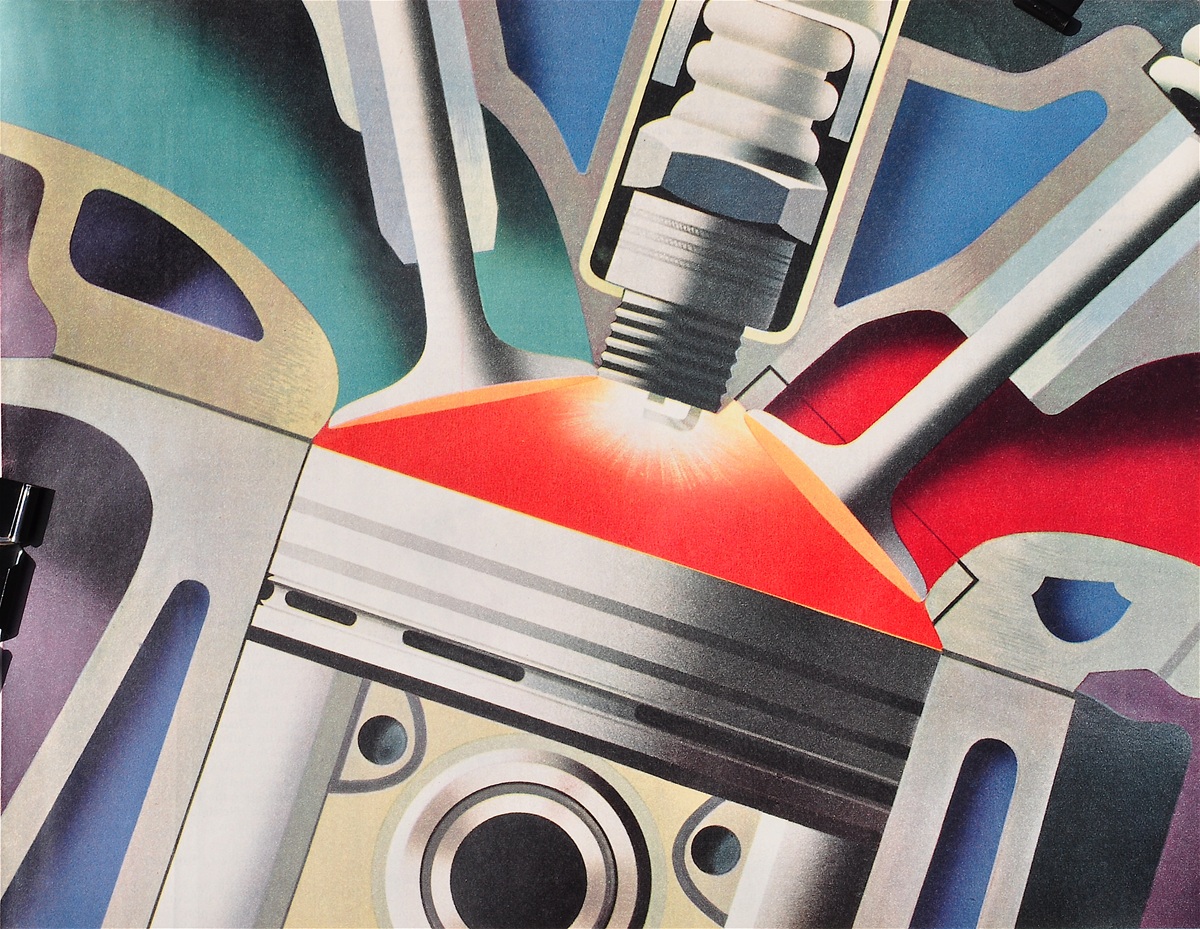
The history books show that it was Chrysler employees John Plattner and William Drinkard who were the two main players; however, it was without the approval and green light given by Kaufman Thuma (K.T.) Keller, the President of Chrysler Corporation, and one with vast experience in all things relating to machining and engineering.
Keller was the type of executive that would spend long hours in the plants and visiting the engineering labs of the company, and then at home to relax he would spend time in his machine shop located in his basement tinkering. A real hands-on guy who was also the boss, and he believed in the concept of the hemispherical-head for use on Chrysler production engines. Much credit also goes to Chrysler’s top engineering manager at the time, James C. Zeder.
He was instrumental in shepherding the FirePower engine into production. Zeder took the time to write a freelance article for Motor Trend Magazine for their December 1951 issue and stated that with the hemispherical engine just released, Chrysler Corporation’s intention was to reinvent itself as an engineering and speed powerhouse. Bold, but it proved to be true and in short order!
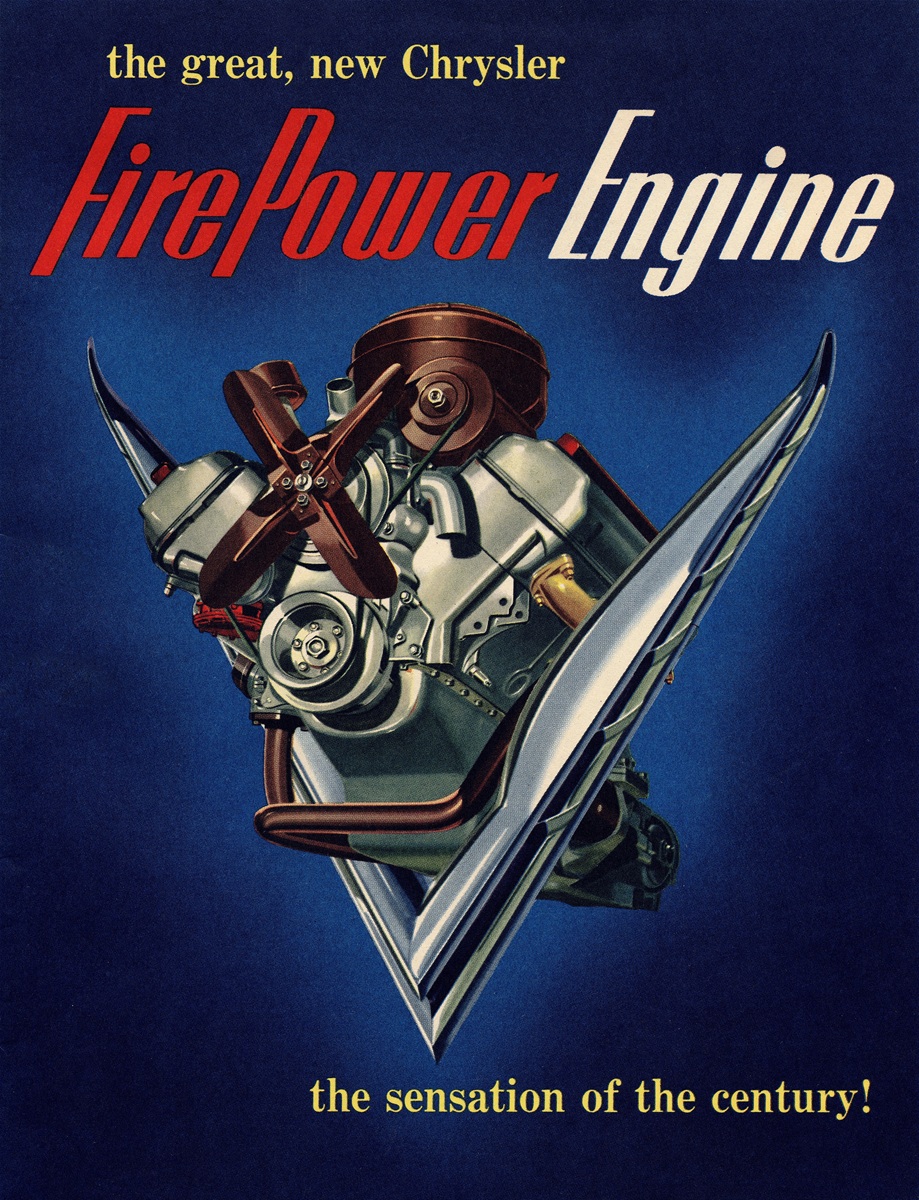
BIG, BULKY AND BEAUTIFUL
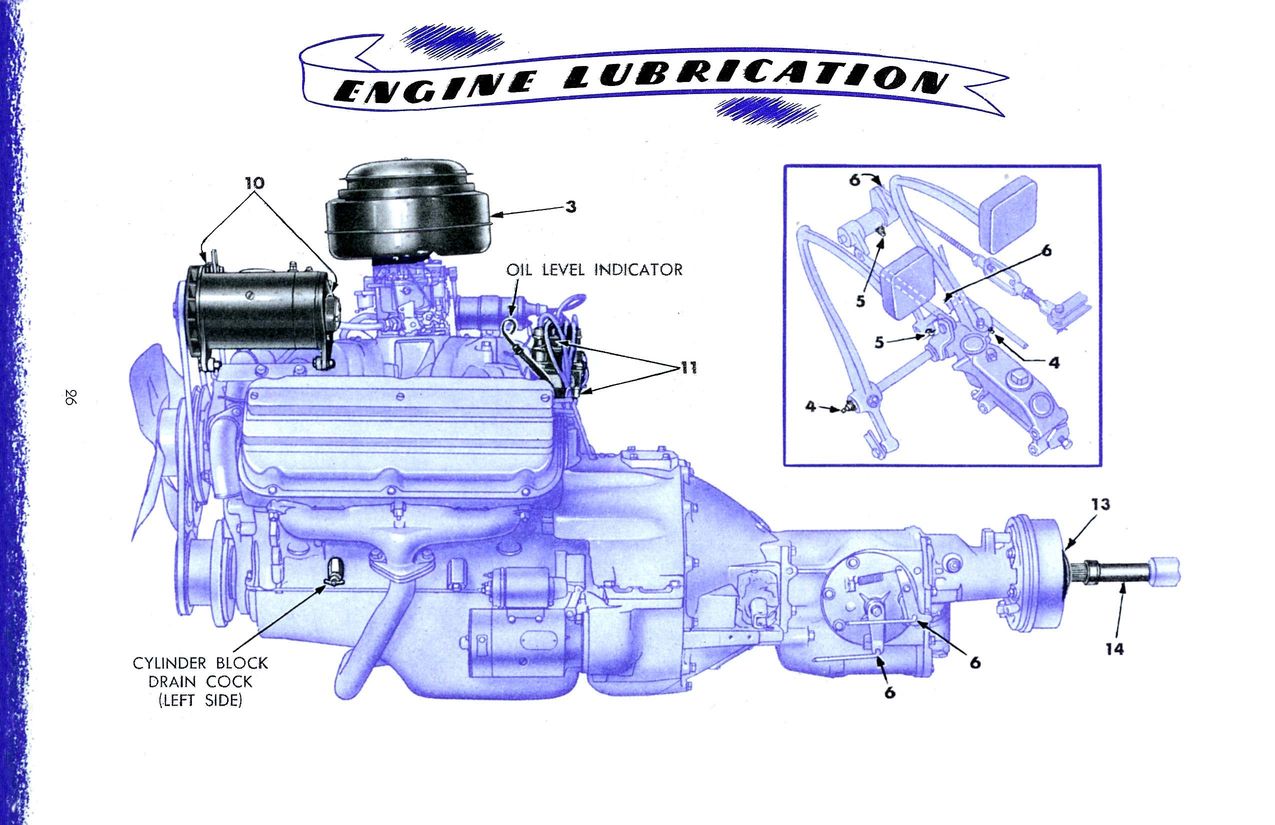
It was February 9, 1951, when the new line of Chrysler cars were introduced. The Chrysler 331-cid HEMI engine was not an optional, extra-cost engine; it came stock in Chrysler vehicles (New Yorker, Saratoga) and wasn’t necessarily promoted as a “racing” or high-performance powerplant, but more of an advanced design that was now being mass-produced. Yes. Big, bulky and heavy. And it more than served its purpose. For the sake of accuracy, the Chrysler Windsor models did not have the HEMI engine fitted to them, as in these early years the Windsor was the entry-level model and only came with six-cylinder engines.
AUTO INDUSTRY LEADER: 180 HORSEPOWER
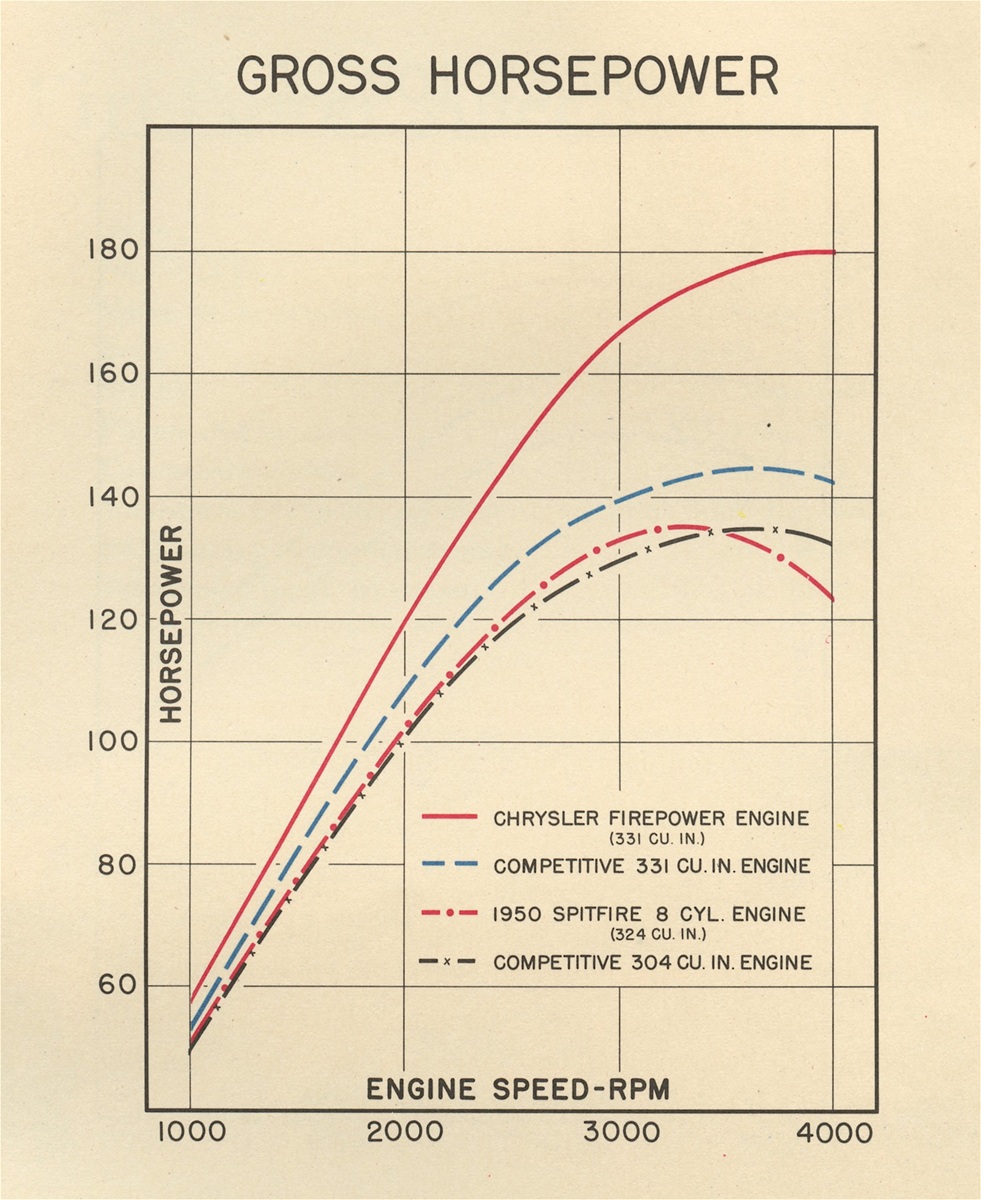
With 180 horsepower at 4,000 rpm, it was a statement: Chrysler FirePower V8 delivered the most available power of all American auto manufacturers. Definitely the strongest powerplant on the road. Large valve diameters, center-mounted spark plugs, 7.5:1 compression ratio, 2-barrel carburetor, runs on regular gasoline. The only other engine even close was Cadillac’s 331-cid V8, which was rated at 160 horsepower.
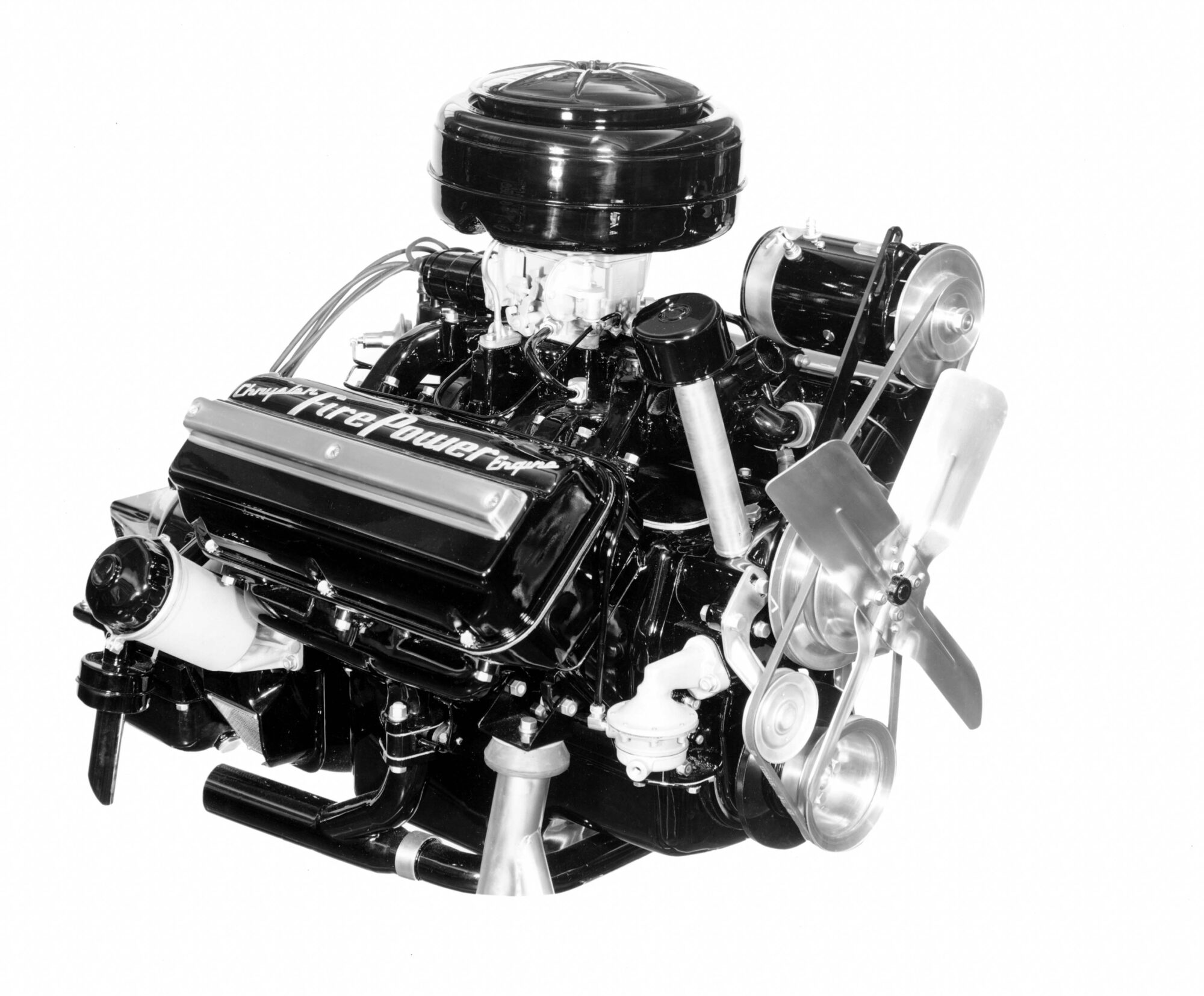
Shown here is a 331-cid Chrysler FirePower, factory photo. This display engine featured extra detailing of chrome and polished accessory parts not normally seen on production versions.
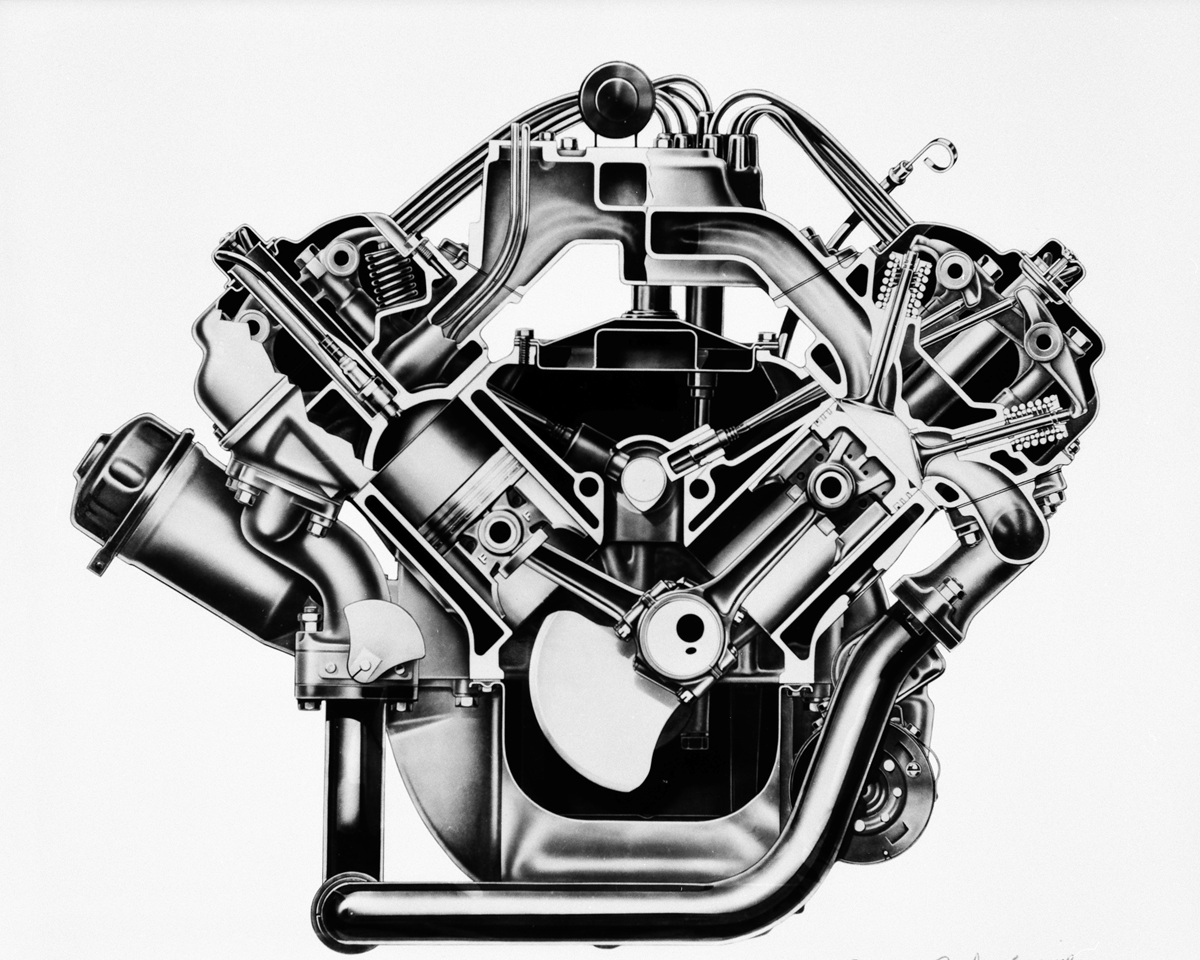
1952: HEMI A311-EX1 FOR RACING
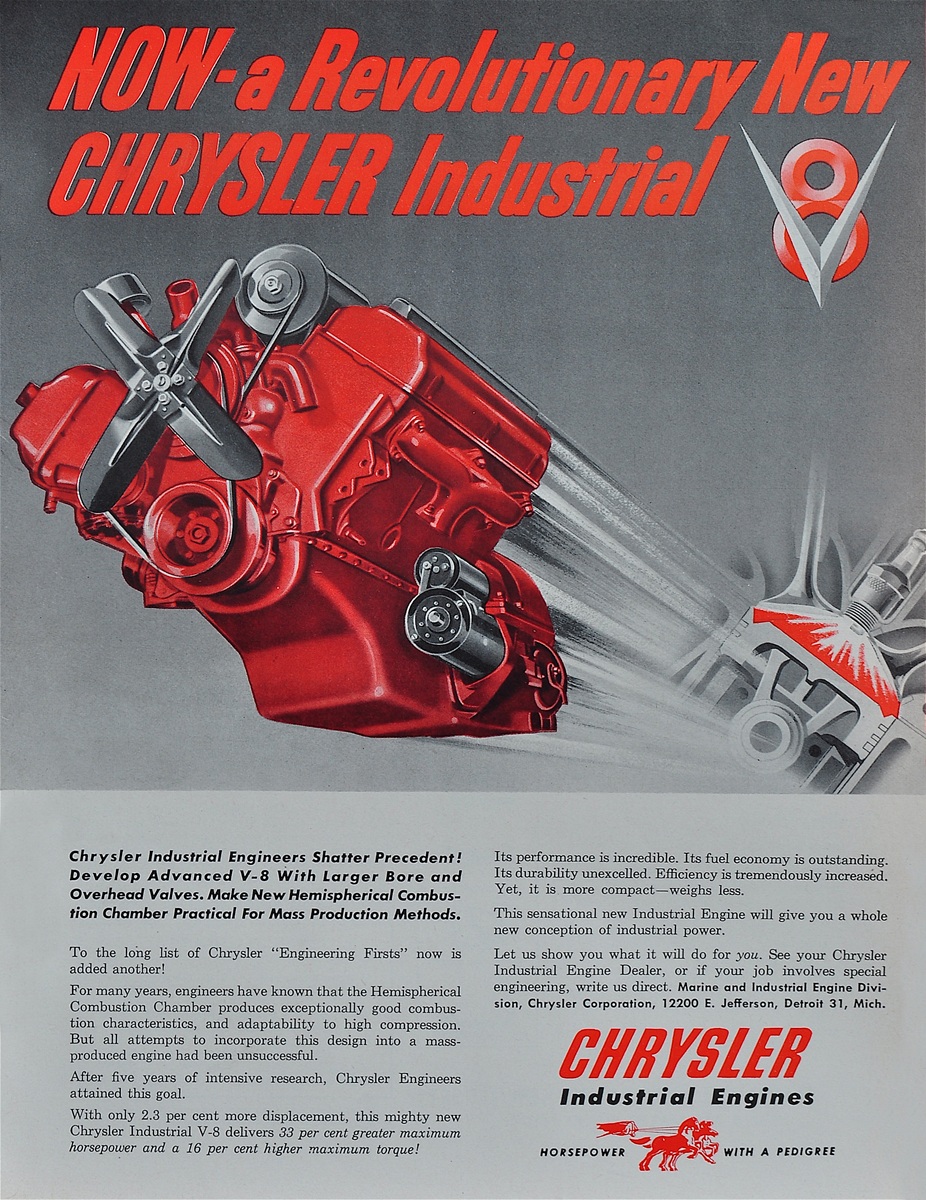
Delivering in excess of 400 horsepower running alcohol as fuel, in 1952, the factory engineering division initiated a test program to increase the output of the HEMI engine for use on the speedway. Using 12.5:1 compression, a roller camshaft and Hilborn fuel injection, the specially designed 331-cid engine, as seen in this June 12, 1952 dynomometer photo, could run for long periods of time at 5,200 rpm while pumping out 400+ reliable horsepower output.
Around this same time frame, Briggs Swift Cunningham, a wealthy sports car racer who was perhaps the very first to race the Chrysler HEMI engine in competition, jumped into the fray and got the ball rolling as to the name Chrysler and racing now going hand in hand. The car (named C-2R) generated a large amount of worldwide publicity as it was entered in the famous Le Mans race. While it didn’t win, it faired well and was the fastest car there, reportedly reaching 152 mph on the Mulsanne Straight and was running as high as second place at the 20-hour mark.
As it turns out, Cunningham had an inside connection at Chrysler as he was chums with K.T. Keller’s son (they were classmates at college) and was able to obtain a supply of the brand-new 331-cid Chrysler HEMI engines. Team Cunningham had a crew of 32 men who prepared the engines sent by the factory, and were built using specially selected blocks, crankshafts, pistons and connecting rods. Ported heads and sodium-filled exhaust valves were included in these hand-built engines, plus higher-lift camshafts were supplied with the compression ratio getting raised to 8.6:1. Special dual log manifolds were constructed to provide the fitting of four Zenith carburetors and the Cunningham crew also built the exhaust systems. This was an all-out competition campaign!
CHRYSLER INDUSTRIAL HEMI ENGINES
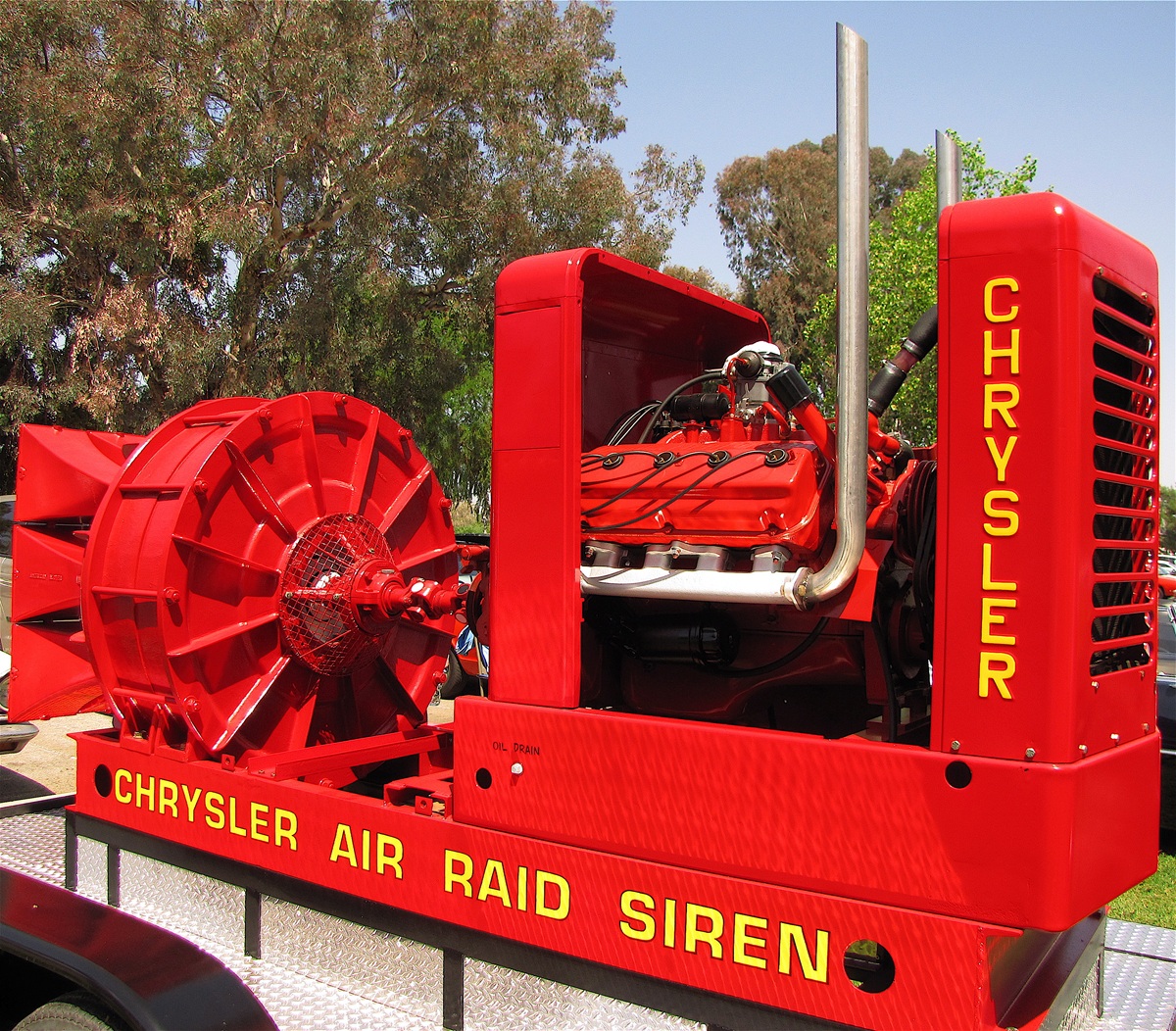
The 1950s saw a multitude of uses of Chrysler HEMI engine power for applications other than passenger cars and trucks. In addition to seeing duty in irrigation pumps, air compressors, lift trucks and other industrial applications, there were specially built Chrysler Air Raid Siren rigs built to provide loud sounds to American communities in the event in incoming missiles during times of war. These monstrous Cold War sirens were driven by the 180-hp Industrial HEMI engine and incorporated a three-stage compressor that blew 2,610 cubic feet per minute, at nearly 7 psi, into the large siren rotor and then out of six large horns for unmatched siren loudness. These Chrysler Air Raid Sirens could be heard as far away as fifty miles under the best conditions, and were advertised with an effective range of four miles in every direction. Most often they were mounted on top of tall buildings and were always heard (mostly only during routine siren tests) but rarely seen!


Chrysler Industrial HEMI engines saw use worldwide and differed in several ways from the automotive versions, less compression and engineering changes for prolonged use at low rpms. Some have been converted for street rod applications over the years.
1954 HEMI: 235 HORSEPOWER
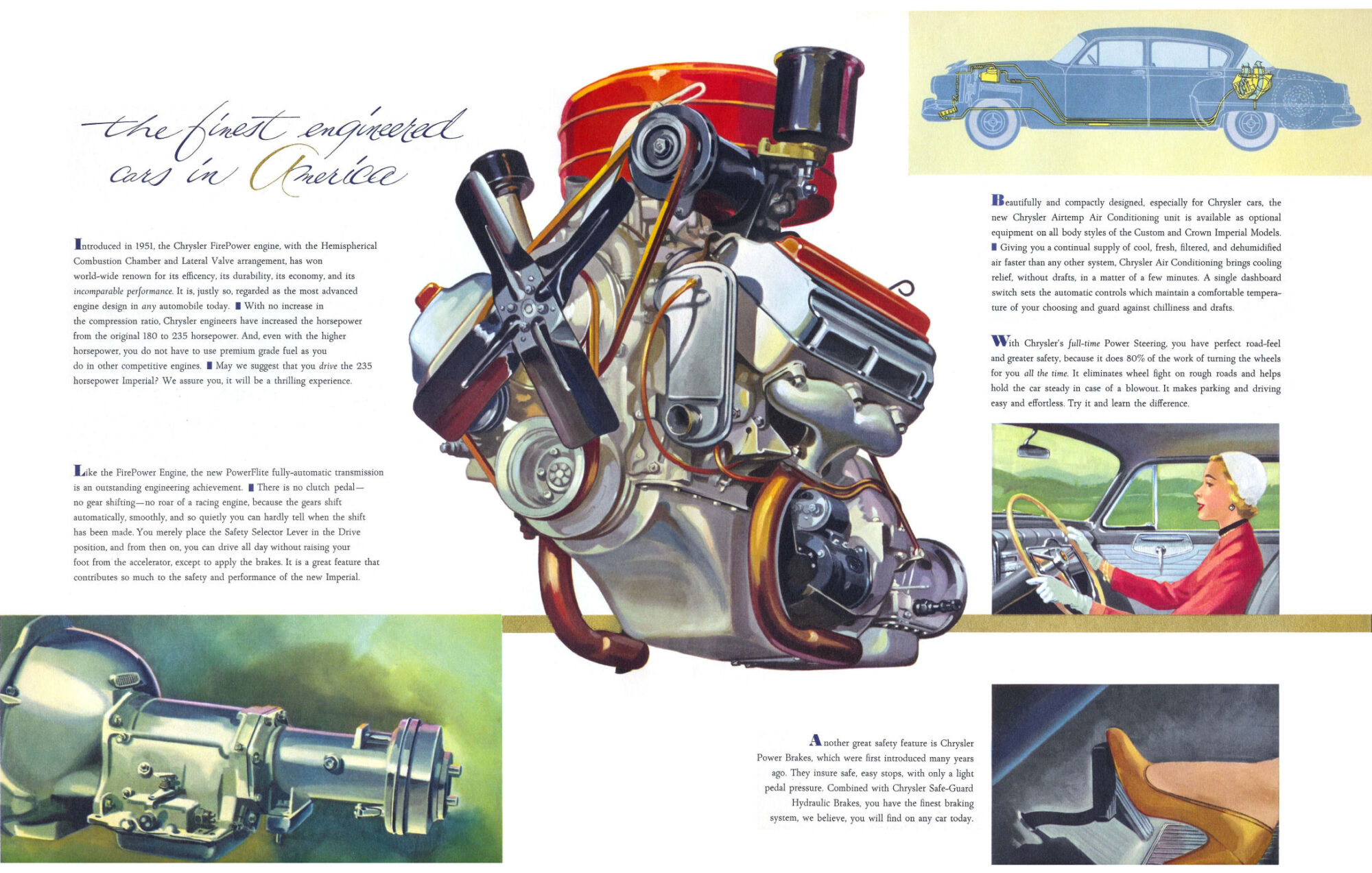
The factory horsepower wars continued for 1954, with the top Chrysler FirePower now up to 235 horsepower, putting Chrysler as the leader again in the Detroit power output race. New cylinder heads and the switch to a four-barrel carburetor was the upgraded components that provided the increase of power. In the Chrysler brochure that model year, the copywriters summarized the new power output with this: “Introduced in 1951, the Chrysler FirePower engine, with the Hemispherical Combustion Chamber and Lateral Valve arrangement, has won world-wide renown for its efficiency, its durability, its economy, and its incomparable performance. It is, justly so, regarded as the most advanced engine design in any automobile today. With no increase in the compression ratio, Chrysler engineers have increased the horsepower from original 180 to 235 horsepower. And, even with the higher horsepower, you do not have to use premium grade fuel as you do with other competitive engines. May we suggest that you drive the 235 horsepower Imperial? We assure you, it will be a thrilling experience.”
1955 C-300 WITH 300 HORSEPOWER
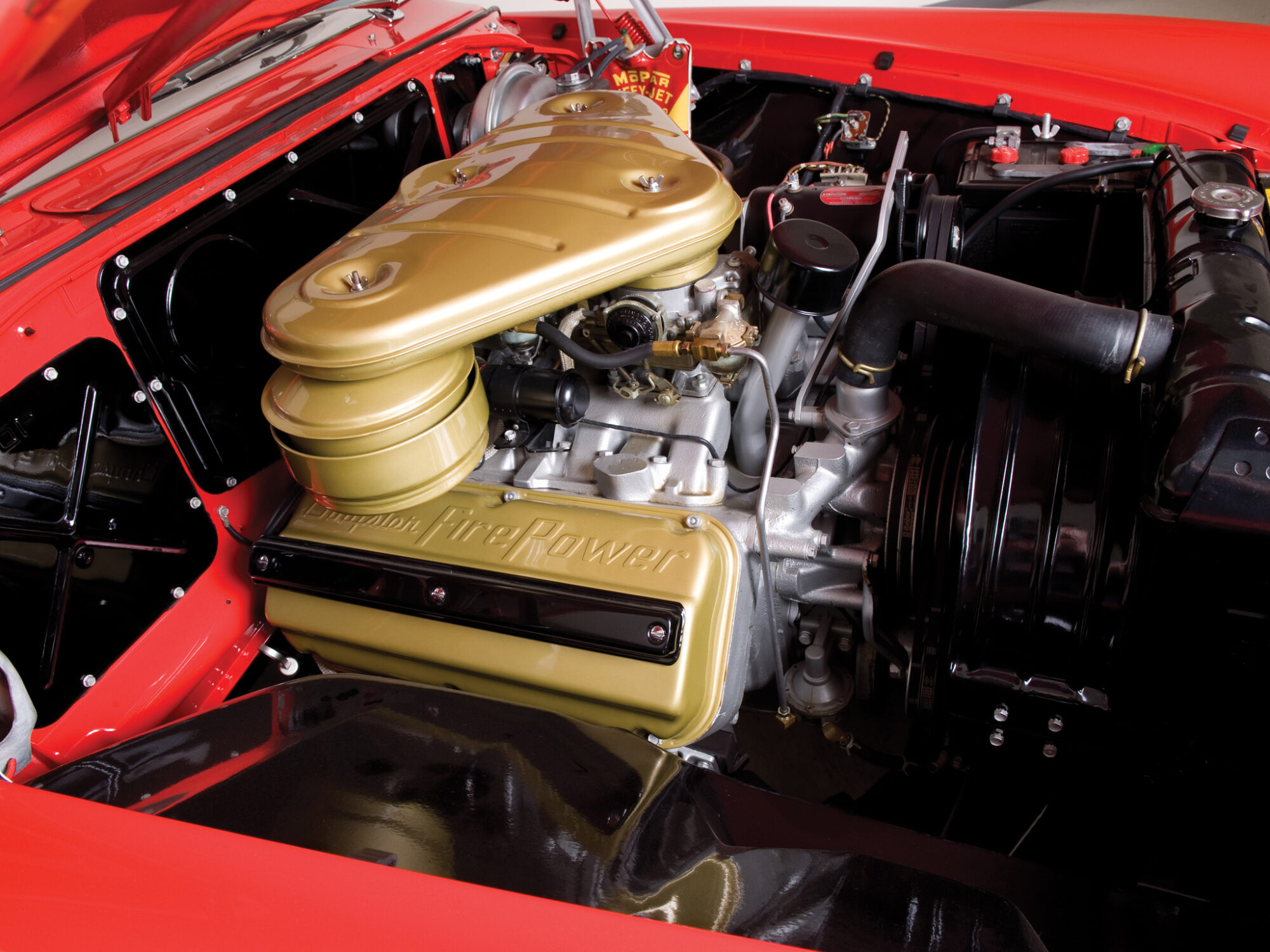
The big news for 1955 was the release of the 300-horsepower FirePower V8, the special HEMI engine for the C-300 Chrysler, and the added power came as a result of twin four-barrels and a competition high-lift mechanical camshaft. This was a “muscle car” engine before the term muscle car was in existence!
For the following year, Chrysler’s 300B HEMI engine saw the cubic inch displacement bumped up to 354 cubic inches, with two different horsepower versions: standard 340 (9:1 compression) and 355 (10:1 compression) as optional, which included a three-inch exhaust system part of the upgraded package. A 280-horsepower version of the 354-cid FirePower HEMI engine was in New Yorker models, and a 331-cid FirePower HEMI engine continued in production for Windsor models.
THE MOVE TO 392 CUBIC INCHES FOR 1957
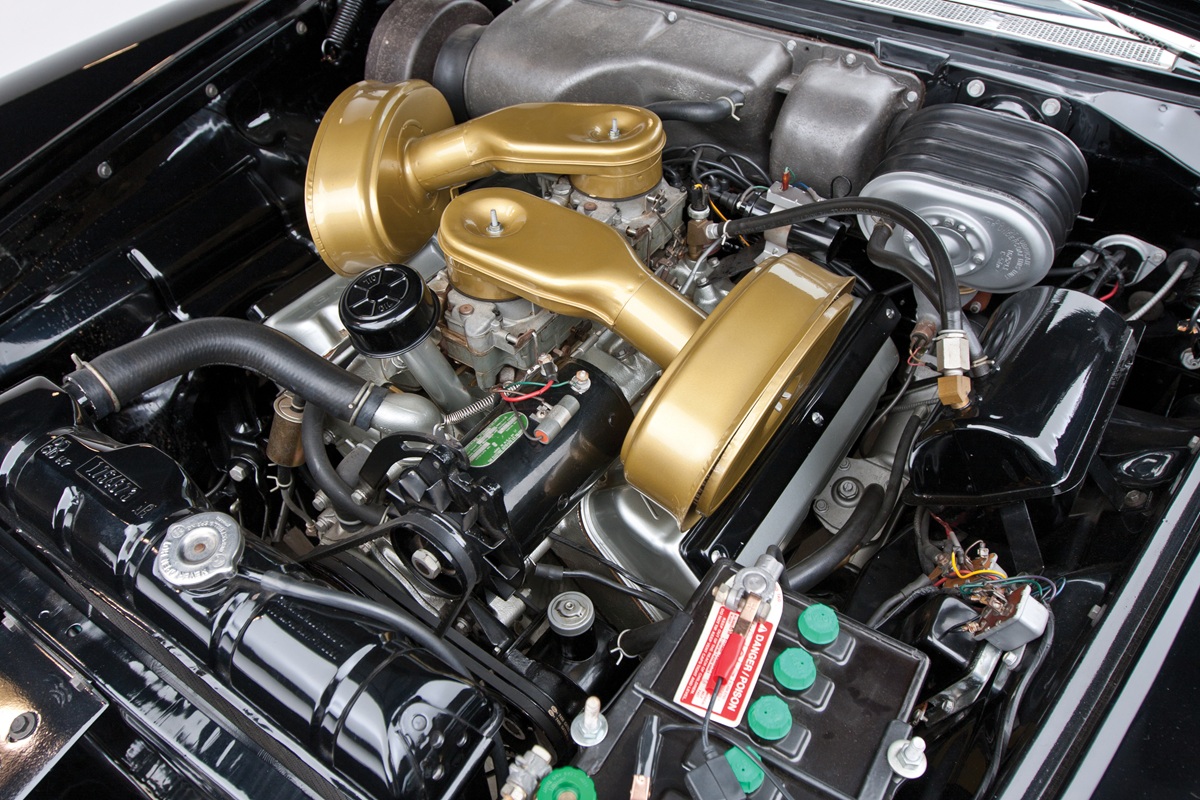
The 1957 model year saw the Chrysler FirePower grow again, this time to 392 cubic inches and as fitted to the 300C model, came with 375 horsepower as standard, 390 as optional. The extra power to 390 came as a result of compression raised from 9.25:1 to 10:1, plus a hotter camshaft, plus larger 2.5-inch exhaust system.
A 354-cid HEMI engine (285 horsepower) was standard on Windsor, Saratoga models, with New Yorkers getting a 325-horsepower 392.
LAST YEAR OF PRODUCTION: 1958
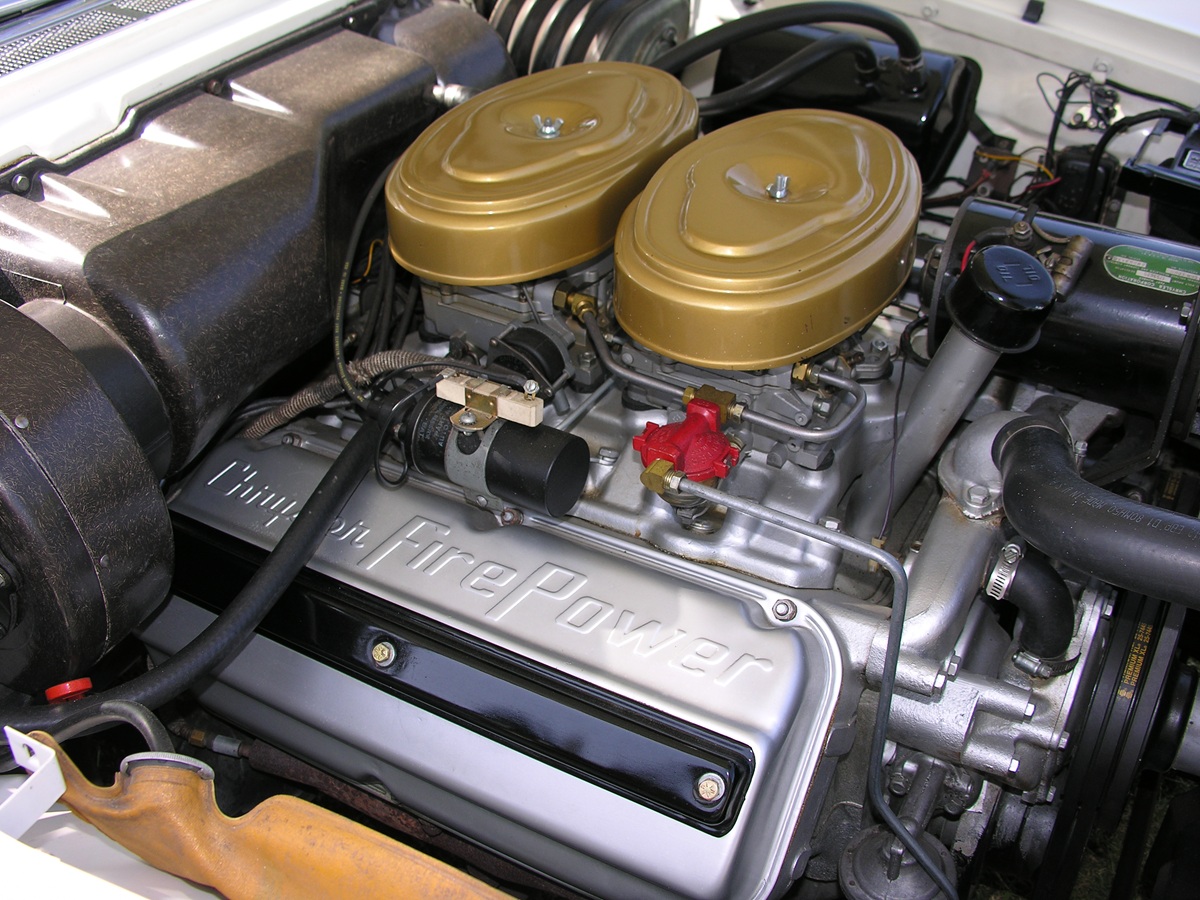
In 1958, the Chrysler 300 ran this 392-cid HEMI engine complete with a pair of inline WCFB Carter four-barrel carburetors mounted on top, producing 380 horsepower at 5,200 rpm. An optional fuel-injected version was rated at 390 hp; however, they were considered defective and not as reliable as required, called the Bendix Electrojector Fuel Injection system. Most were recalled and replaced, a very low number of the F. I. cars are still out there! 1958 was the last year for HEMI engine production, which included 345-hp single four-barrel versions (New Yorker and Imperial), plus 354-cid versions as used in Windsor (290 hp) and Saratoga (310 hp) models that year. The end of an era.
DRAG RACING AND HOT RODDING
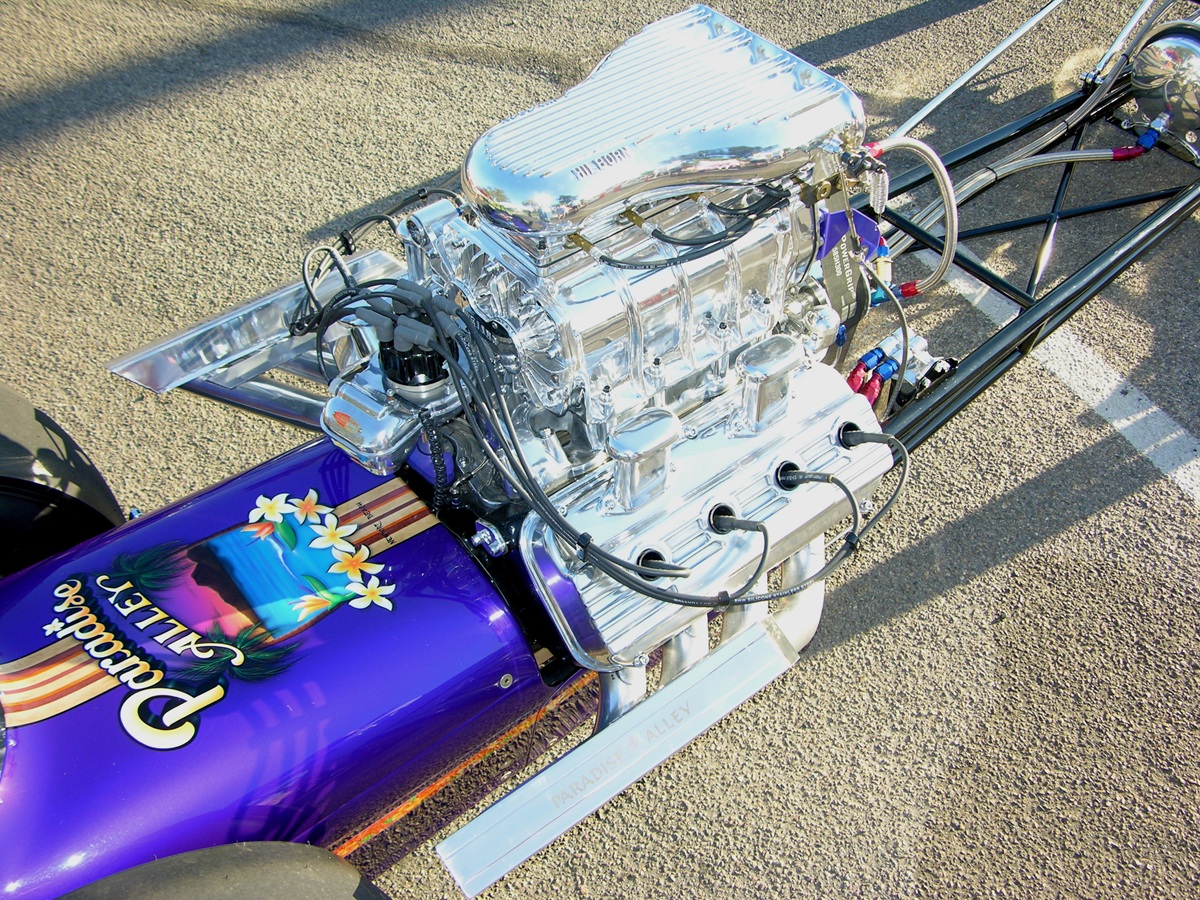
Drag racers caught by virtue of the performance as to how powerful the Chrysler HEMI engines were, and for “rail jobs” as well as a full range of other types of drag cars. Included in the early days of HEMI drag strip activities was the Ramchargers car club, who were able to get a “warranty” HEMI engine for their High & Mighty ’49 Plymouth Business Coupe.
Click here for more details on that legendary car: https://www.dodgegarage.com/news/article/showcase/2025/03/legendary-ramchargers.html
Most all of the early pioneer dragsters ran HEMI engine power after it was discovered that the Chrysler engine was superior. Don Garlits, Connie Kalitta, Art Chrisman, The Big Wheel, Chris Karamesines, Cook & Bedwell, Joe Schubeck – all across the country, the switch to Chrysler power took place. By the early sixties and beyond, HEMI engines from the 1950s saw victories on American and international drag strips, plus other forms of motorsports!
Today, these GEN II engines (referred to as “early” HEMI engines once the 426 version was released in 1964) are still popular in nostalgia drag racing, as well as Cackle Fest cars such as the pictured beautiful Paradise Valley FED (Front Engined Dragster).
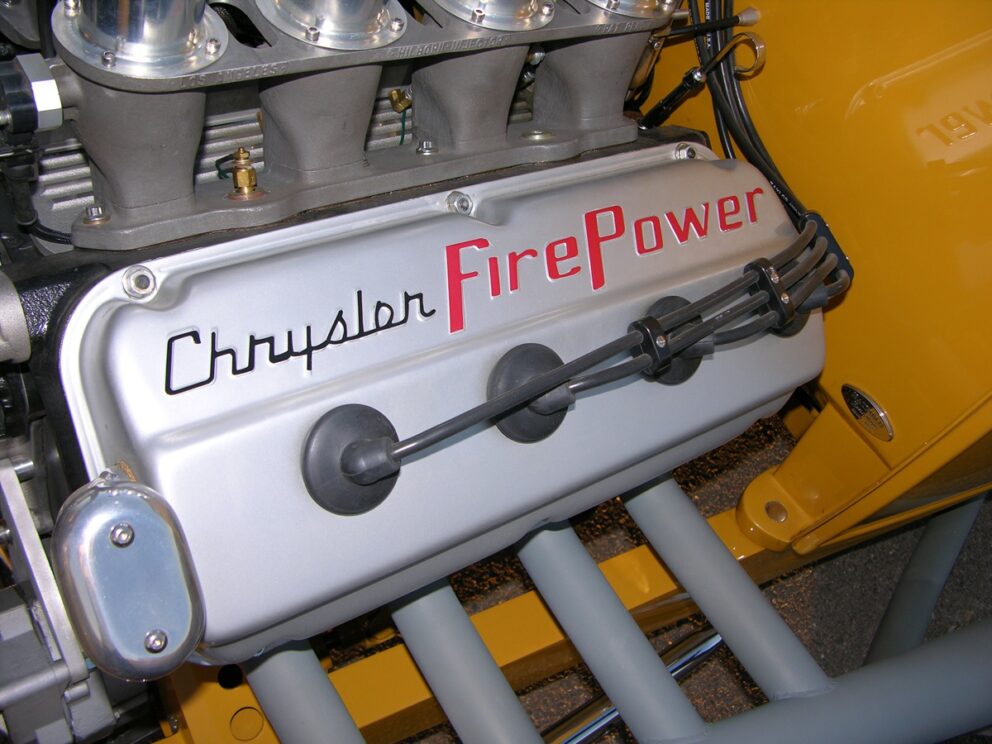
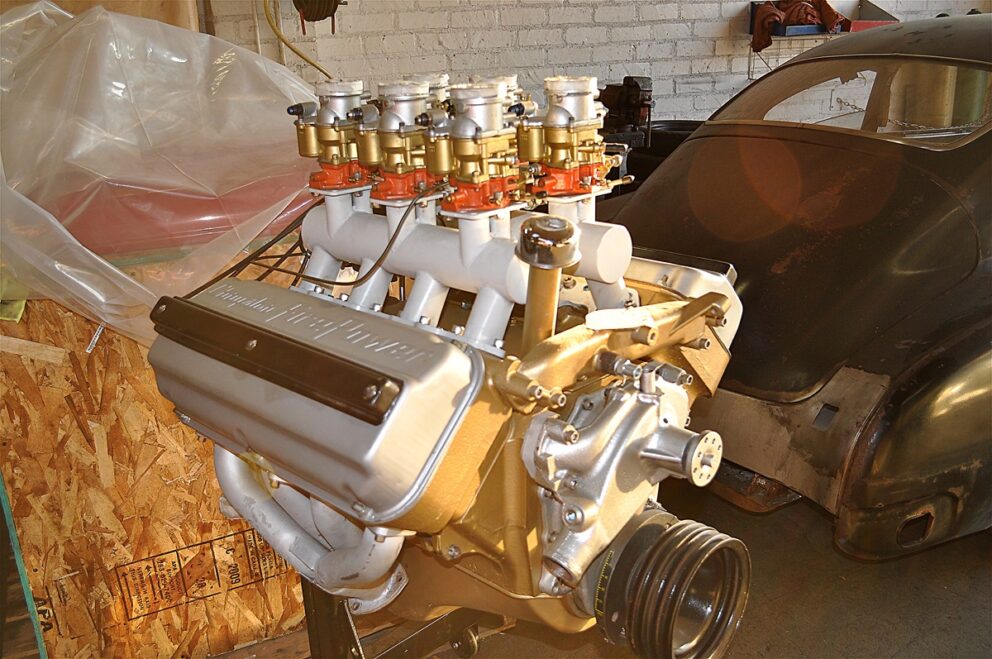
Not only for the potent power produced, but also for the impressive appearance of the big HEMI valve covers, hot rodders and street rodders have long incorporated GEN I HEMI engines in their machines. One glimpse of one of these classic Chrysler engines and you know one thing for certain: that’s a HEMI!
Author: James Maxwell

0 Comments